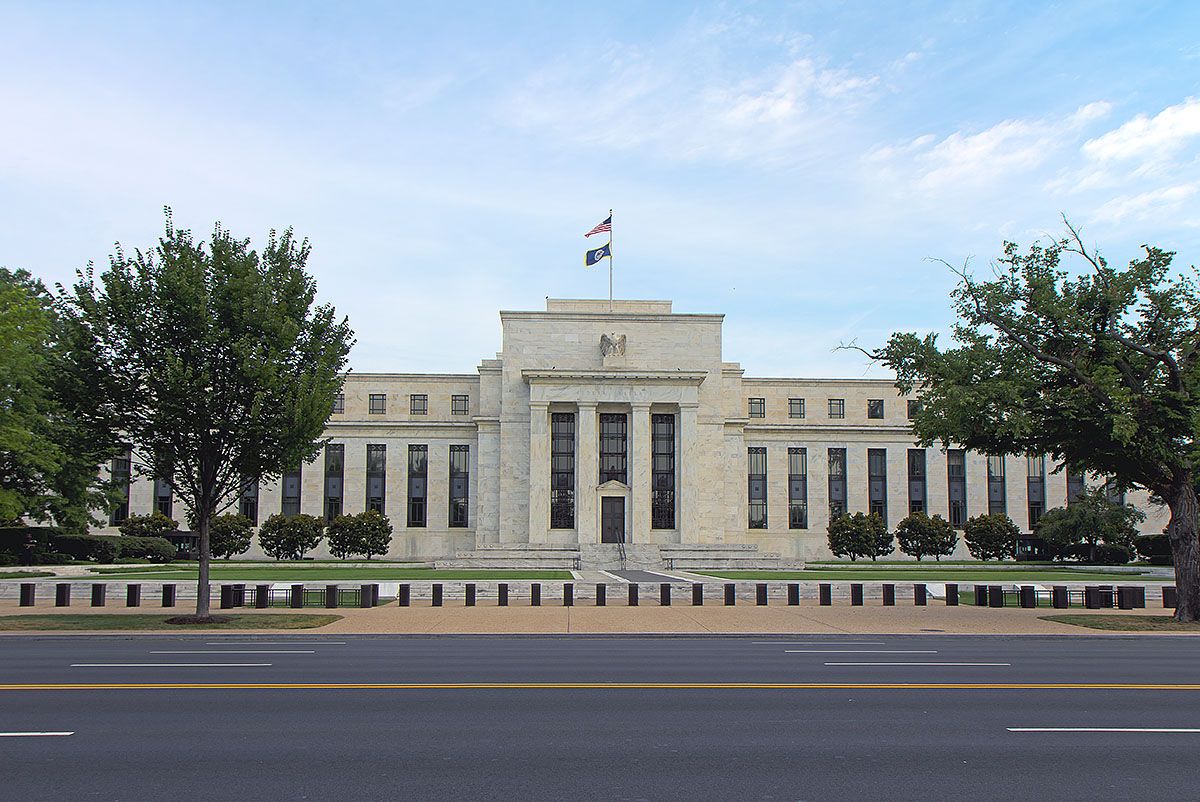
The Federal Reserve’s monetary policy decisions ripple through the entire economy, touching everything from savings accounts to corporate investments. This week, the central bank’s widely anticipated move to lower its benchmark interest rate for the first time since December 2024 has ignited a flurry of speculation about its potential impact on American households, particularly those with a mortgage or contemplating a home purchase. While the headline news might suggest immediate relief, the reality is far more nuanced, demanding a sophisticated understanding of how these mechanisms truly operate within the intricate financial landscape.
For many homeowners and prospective buyers, the prospect of reduced borrowing costs is a powerful incentive, yet experts caution against expecting an instant or direct correlation. The intricate dance between the Fed’s short-term rate adjustments and the longer-term mortgage market involves a confluence of factors, including bond market dynamics, investor sentiment, and broader economic indicators that often move independently of the Fed’s immediate actions. To truly grasp how the Fed’s actions today could shape your mortgage and financial landscape over the next ten years, it’s essential to look beyond the immediate headlines and delve into the underlying economic principles at play.
This in-depth exploration will unpack the complex relationship between the Federal Reserve’s monetary policy and the housing finance sector, providing a comprehensive framework for understanding what these changes mean for your long-term financial planning. We will meticulously examine the various channels through which interest rate decisions influence mortgage costs, clarify common misconceptions, and offer a clear perspective on the trajectory of borrowing expenses in the coming years. By dissecting these critical elements, we aim to equip you with the knowledge necessary to navigate this evolving financial environment with greater confidence and strategic insight.

1. **The Federal Reserve’s Indirect Influence on Mortgage Rates**It is a fundamental misconception to assume that the Federal Reserve directly dictates mortgage rates. In actuality, the central bank’s influence operates through an indirect mechanism, primarily by establishing the federal funds rate. This pivotal rate represents the interest that banks charge one another for overnight loans, effectively serving as the foundational benchmark for the broader interest rate structure across the entire U.S. economy. While its impact is undeniable, it is not a direct command over mortgage pricing.
Jake Krimmel, a senior economist at Realtor.com, clearly articulated this distinction in an interview with CBS MoneyWatch, stating, “The Fed is setting short-term interest rates. Things like the mortgage rates are longer-term interest rates.” This crucial insight highlights that while Fed rate cuts directly influence short-term instruments—such as yields on certificates of deposit (CDs) and high-yield savings accounts—their transmission to longer-term products like mortgages involves a more complex and often delayed process, mediated through various financial markets.
The federal funds rate, therefore, functions as a powerful signal that permeates the financial system, influencing a cascade of other short-term rates. This broad impact on the overall lending environment creates the conditions under which longer-term rates, though not directly controlled by the Fed, are compelled to adjust in response. Understanding this indirect, rather than direct, relationship is absolutely critical for anyone attempting to decipher how central bank policy ultimately filters down to the monthly mortgage payments shouldered by millions of American households.
It is paramount to recognize that conventional mortgage loans are structured with terms ranging from 15 to 30 years, and even adjustable-rate loans, despite their variable nature, encompass substantial terms. This extended-term horizon means that investors, who ultimately fund these loans, are far more focused on anticipated long-term economic conditions—such as inflation, economic growth, and employment stability—than they are on the Fed’s immediate, short-term lending horizon. Consequently, while the Fed’s actions are relevant, the connection to long-term mortgage rates is not a simple, one-to-one correspondence, necessitating a deeper examination of other market forces and investor expectations.

2. **The Critical Role of the 10-Year Treasury Yield in Fixed Mortgages**While the Federal Reserve’s overarching monetary policy provides a backdrop for the entire financial system, fixed-rate mortgages operate under a distinct primary influence: the bond market, specifically the yield on the 10-year Treasury note. This particular Treasury instrument serves as an exceptionally critical barometer that guides lenders in the pricing of home loans. The strong correlation between these two long-term financial instruments stems from their shared characteristics of relatively stable risk and extended duration, making them conceptually similar in the eyes of investors.
As elucidated by the Brookings Institute, a respected nonprofit public policy organization, the relationship is one of parallel movement rather than direct entanglement. Jake Krimmel observed, “They’re maybe not pressed up against one another, but they’re sort of moving in the same direction.” This analogy underscores that while fixed-rate mortgages and the 10-year Treasury yield may not be perfectly identical in their movements, their general trajectory is often aligned, making the Treasury yield an invaluable leading indicator for mortgage rate trends. Lenders, in their ongoing assessment of market conditions, meticulously monitor the yield on 10-year Treasurys, utilizing it as a foundational guide for establishing the interest rates they extend to prospective homebuyers.
The yields on the 10-year Treasury note are not static; they have experienced notable fluctuations throughout the past year, driven by a complex interplay of various economic and geopolitical factors. Stephen Kates, an analyst at the personal finance website Bankrate, highlighted this to CBS MoneyWatch, pointing to “concerns over tariffs and what the One Big Beautiful Bill Act would mean for the economy” as significant contributors to these yield movements. Such broader economic uncertainties and policy developments directly translate into volatility within the Treasury market, which, by extension, impacts the cost of long-term borrowing for housing.
Crucially, investor sentiments—encompassing how bonds are actively being bought and sold, alongside collective expectations regarding future inflation—are paramount in shaping these longer-term rates. Kates further emphasized this intricate dynamic: “Investor sentiments, how bonds are being bought and sold, expectations of inflation are all going to impact those longer-term rates.” This illustrates that the intricate tapestry of economic forecasts, market psychology, and actual trading activity within the bond market collectively serves as a primary determinant for the rates offered on fixed-rate mortgages.
Therefore, for any individual seeking to forecast the future trajectory of home loan costs, comprehending the symbiotic relationship between fixed-rate mortgages and the 10-year Treasury yield is absolutely paramount. It reinforces the understanding that while the Federal Reserve sets a crucial overall tone, the bond market’s continuous evaluation of long-term economic conditions ultimately holds substantial sway over the interest rates borrowers will eventually face.

3. **How Financial Markets Price In Fed Cuts Ahead of Official Announcements**A particularly salient characteristic of how monetary policy influences mortgage rates is the inherently forward-looking nature of financial markets. Rather than passively awaiting official pronouncements, market participants possess a sophisticated ability to anticipate the Federal Reserve’s impending policy shifts, adjusting their asset pricing and lending rates accordingly well in advance. This phenomenon, commonly referred to as “pricing in,” signifies that a substantial portion of the expected impact of a Fed rate cut is often already embedded within current mortgage rates even before the central bank formally communicates its decision.
This anticipatory trend has been widely observed in the lead-up to the recent, highly anticipated rate cut. Jake Krimmel specifically pointed out that “the average rate on both 30-year mortgages and 15-year mortgages have inched down at the same time that several Fed governors and Fed Chair Jerome Powell have signaled support for slashing interest rates.” This observation provides concrete evidence that lenders were not merely reacting to events but proactively adjusting their offerings based on strong indications from the central bank’s leadership.
Stephen Kates echoed this sentiment, confirming that “A lot of the decrease that we’ve seen in the last four to six weeks has been in anticipation by some of this cut.” This behavior, where banks and other lending institutions pre-emptively lower their rates, is not an anomaly but a consistent pattern within financial markets. A notable historical precedent occurred in September 2024, when mortgage rates declined to a two-year low *before* Fed officials ultimately announced an unusually substantial 0.50 percentage point reduction, clearly demonstrating this forward-looking dynamic.
Consequently, this preemptive adjustment mechanism explains why the actual rate offers that consumers observe at the beginning of a month, preceding a Fed meeting, might not exhibit significant differences from those available after the official rate cut announcement. Selma Hepp, chief economist at Cotality, succinctly summarized this by stating, “The Federal Reserve rate cut this week has already been priced into mortgage rates, so the immediate impact will be minimal.” This underscores that much of the expected benefit, if any, may already be realized by the time the news breaks.
Therefore, individuals contemplating a home purchase or a mortgage refinance should be acutely aware of this market dynamic. The conventional wisdom of waiting for a post-announcement drop may be misguided, as the market has likely already factored in the anticipated policy shift. As Bill Banfield, chief business officer at Rocket Mortgage, sagely advised, “waiting for the official news doesn’t guarantee a better deal. Often, it means the best moment has already passed.” Strategic decisions require understanding this temporal lag.
Read more about: Trump’s Trade Offensive: Tariffs Hit India, Brazil, and South Korea as August Deadline Looms

4. **The Immediate vs. Gradual Impact of Fed Cuts on Mortgage Rates**While financial markets are adept at pricing in anticipated Federal Reserve rate adjustments, the actual effect on mortgage rates, particularly for fixed-rate products, tends to be far more gradual and nuanced than many consumers initially envision. As previously established, homeowners should not harbor expectations of an immediate, substantial drop in mortgage costs on the precise day the central bank officially announces a rate cut. Instead, the process is one characterized by slow, incremental adjustment rather than an abrupt, transformative shift in borrowing expenses.
Selma Hepp, chief economist at Cotality, provided invaluable clarification on this point, explaining, “The Federal Reserve rate cut this week has already been priced into mortgage rates, so the immediate impact will be minimal.” However, she appended a critical nuance to this statement: “while a single rate cut may not cause a significant additional drop, a series of anticipated cuts for the rest of 2025 and into 2026 could continue to put gradual downward pressure on mortgage rates.” This perspective emphatically suggests that it is the sustained, cumulative direction of policy over time, rather than any singular event, that genuinely influences and moves the needle for long-term mortgage rates.
Indeed, the recent announcement of a quarter-point reduction by the Fed is widely regarded by financial markets not as an isolated incident but as the commencement of a broader series of interest rate cuts. Forecasts derived from the fed funds futures market indicate that this trajectory of declining rates is expected to persist through the remainder of this year and extend into the third quarter of 2026. This projected, prolonged downward path in interest rates is what is anticipated to foster more favorable borrowing conditions for homeowners and prospective buyers over an extended period, contrasting sharply with the notion of a singular, immediate, or transformative financial event.
The forward-looking orientation of financial markets further implies that explicit statements made by Fed Chair Jerome Powell, particularly those concerning the future trajectory of monetary policy, can sometimes wield a more immediate and profound influence on the housing market than the rate cut itself. Jake Krimmel observed, “That might be where there is actually some action with the bond markets or with mortgage rates, because he might give some hints about where the Fed is headed in the future.” This highlights the significant, often underappreciated, role of central bank communication and forward guidance in shaping market expectations and, consequently, real-world mortgage rates.
Ultimately, for the vast majority of individuals who currently hold fixed-rate mortgages, their existing interest rate will remain immutable unless they proactively decide to refinance their loan or embark on the purchase of a new property. The ongoing downward pressure on rates resulting from a series of Fed cuts merely provides the *opportunity* for accessing lower borrowing costs in the future; it does not automatically alter the terms of pre-existing loan agreements, necessitating active participation from the homeowner to capitalize on these evolving conditions.

5. **Distinguishing Between Short-Term and Long-Term Rate Sensitivities: ARMs vs. Fixed**The pervasive impact of Federal Reserve rate adjustments is far from uniform across the diverse spectrum of loan products, with a particularly stark distinction emerging between instruments sensitive to short-term interest rates and those tethered to longer-term market conditions. This crucial difference in sensitivity is most clearly illustrated when comparing adjustable-rate mortgages (ARMs) to their fixed-rate counterparts, highlighting varying degrees of direct correlation to the federal funds rate and its immediate implications.
Adjustable-rate mortgages, by their very structural design, are inherently more responsive and sensitive to shifts in the federal funds rate. This heightened degree of responsiveness is a direct consequence of ARMs typically being benchmarked to short-term market indices, such as the Secured Overnight Financing Rate (SOFR). Consequently, when the Fed implements changes to its benchmark rate, these underlying short-term indices tend to move in close conjunction, leading to a relatively swift and often automatic adjustment in the interest rates charged on ARMs for borrowers within a defined period.
In stark contrast, fixed-rate mortgages exhibit a fundamentally different dynamic. Their pricing is predominantly influenced by the broader bond market, specifically tracking the yield on the 10-year Treasury note. As extensively discussed, these are long-term financial instruments, and their rates therefore reflect a more comprehensive assessment of overarching economic expectations and investor sentiment projected over an extended duration. While the Fed’s general monetary policy stance certainly contributes to the economic environment, the direct, immediate, and explicit link observed with short-term rates and ARMs is notably less pronounced for fixed-rate loans.
This critical divergence means that households burdened with variable-rate loans or other forms of credit obligations, including a significant proportion of credit card debt, are likely to experience alterations in their interest rates almost immediately following a Fed rate cut. Brett House, an economics professor at Columbia Business School, affirmed this, stating: “For households with variable-rate loans or other forms of credit obligations, they are going to see the interest rates on that borrowing come down, almost immediately.” This rapid transmission mechanism offers direct and relatively swift financial relief, or conversely, imposes a burden, contingent upon the Fed’s policy direction.
Therefore, for homeowners currently holding or considering an ARM, the Federal Reserve’s short-term rate decisions bear a significantly more direct and immediate relevance to their fluctuating monthly payments. Their financial exposure is inherently tied to the Fed’s prompt actions. Conversely, for those with fixed-rate mortgages, the impact is considerably more diffused, longer-term, and primarily channeled through the bond market’s intricate reaction to the broader economic outlook, an outlook which is, of course, influenced by the central bank’s overarching monetary policy direction.

6. **Beyond the Fed: Other Key Factors Shaping Mortgage Costs**While the Federal Reserve’s monetary policy decisions understandably capture widespread attention and considerable media focus, it is absolutely crucial to acknowledge that these decisions represent only one element within a multifaceted array of factors that collectively determine the ultimate cost of home loans. A truly comprehensive and accurate understanding of mortgage rate movements necessitates a holistic consideration of a broader spectrum of macroeconomic indicators, geopolitical developments, and domestic market dynamics that can exert profound and independent influence.
Financial experts consistently underscore that a range of other, equally vital, elements play a pivotal role in shaping mortgage rates. These include, but are not limited to, the prevailing rate of inflation, which invariably erodes the purchasing power of money and significantly influences lenders’ forward-looking expectations for future returns and risk premiums. Robust job growth, serving as a key indicator of a strong and expanding economy, can paradoxically lead to upward pressure on rates, as can sustained consumer spending, which signals buoyant aggregate demand. Conversely, evidence of a weakening job market or a deceleration in consumer activity often contributes to downward pressure on rates, reflecting broader economic softening.
The fundamental dynamics of housing demand itself constitute another critical domestic factor that directly impacts mortgage pricing. Periods of exceptionally high demand for homes can afford lenders the leverage to offer less competitive rates, as the strong underlying appetite for housing ensures a consistent flow of business. Conversely, a sluggish or contracting housing market often compels lenders to reduce rates in a bid to stimulate demand and attract hesitant borrowers. Jessica Lautz, vice president of research at the National Association of Realtors, eloquently articulated this complexity, stating: “There are a lot of factors that go into mortgage interest rates. Yes, Federal Reserve policy is one part. But also, ‘it’s really looking at the market. It’s looking at supply and demand for mortgages.'”
Extending beyond purely domestic economic conditions, global events and other governmental policies frequently contribute to the intricate web of influences impacting mortgage rates. For instance, heightened concerns over international trade tariffs, as previously noted by Stephen Kates, can introduce significant volatility into the 10-year Treasury yield, which, in turn, directly affects mortgage pricing. Broader geopolitical stability, shifts in global capital flows, and evolving international economic trends can likewise sway investor sentiment and alter the attractiveness of various bond market instruments, thereby impacting long-term borrowing costs for housing.
Moreover, it is essential to consider underlying structural issues that transcend cyclical economic adjustments. Fed Chair Jerome Powell himself pointed to the pervasive problem of a nationwide housing shortage as a “deeper problem here, not a cyclical problem the Fed can address.” This fundamental supply-side constraint implies that even in an environment of progressively lower interest rates, housing affordability may continue to present a significant challenge for many prospective buyers due to persistent scarcity, underscoring that mortgage rates are merely one, albeit important, component of the overall cost and accessibility of homeownership.

7. **The Dual Impact of a Lower Interest Rate Environment: Good and Bad for Households**The Federal Reserve’s decision to embark on a series of interest rate cuts, initiated with a 0.25% reduction in the fed funds target rate, carries significant implications that extend across the breadth of American households. This shift in monetary policy is not a unidimensional event; rather, it introduces both advantageous opportunities and discernible challenges, particularly for individuals managing both short-term investments and outstanding loans such as mortgages. Understanding this dual nature is crucial for navigating the evolving financial landscape effectively.
Indeed, the message from the market is unequivocally clear: interest rates are poised for a decline, a trajectory expected to continue through the balance of this year and into the third quarter of 2026, potentially bottoming out just below 3% at the end of that period. This downward trend, while generally fostering a more accommodative economic environment, will impact different aspects of household finances in contrasting ways. It requires a strategic and informed approach to personal financial planning to maximize the benefits and mitigate the drawbacks inherent in a lower interest rate world.
On one hand, the prospect of reduced borrowing costs presents a welcome relief for those with existing debt or plans for new financing. Conversely, for investors, especially those who rely on income from short-term savings and money market funds, a lower rate environment signals a period of diminished returns. This intricate interplay of benefits and challenges underscores the necessity for households to evaluate their complete financial picture, from their mortgage obligations to their investment portfolios, in light of the Fed’s projected path for interest rates.

8. **The Benefits for Borrowers: Mortgage Refinancing and Real Estate Activity**A significant positive outcome of a lower interest rate environment is the opportunity it presents for consumers to borrow money more affordably. For homeowners, this translates directly into the powerful potential to refinance an existing mortgage, thereby reducing their monthly payments and freeing up valuable cash flow. This ability to restructure debt at more favorable terms can profoundly impact household budgets, offering immediate and tangible financial relief in the months and years ahead.
Mortgage rates, while not directly tracking the federal funds rate, are closely correlated to the 10-year Treasury yield, which historically also declines when the Fed initiates rate cuts. In the past 20 years, when the Fed has cut rates, mortgage rates have consistently followed suit, particularly during the initial phase of these monetary policy adjustments. This historical pattern suggests a strong likelihood that mortgage rates will continue their downward trajectory in 2026, building on the initial reductions observed this year.
This anticipated decline in financing costs is expected to invigorate the real estate market, fostering an environment conducive to increased activity. As mortgage rates potentially push through 6% and even lower, the key input of housing affordability improves, drawing more prospective buyers into the market and encouraging existing homeowners to consider selling or refinancing. The Mortgage Bankers Association has already reported an uptick in mortgage refinancing activity, signaling the nascent stages of this trend.
While a return to mortgage rates as low as 4% is considered unlikely, given the current outlook for the 10-year Treasury yield, a sustained period of the 10-year Treasury yield remaining below 4% in 2026 could indeed push average mortgage rates below 6%. This shift, though perhaps not as dramatic as some might hope, would nonetheless represent a substantial improvement for many, presenting a tangible opportunity to secure more favorable long-term borrowing costs for homeownership.

9. **The Challenges for Investors: Declining Yields in Money Market Funds**While borrowers celebrate reduced interest expenses, a lower rate environment presents a notable drawback for investors, particularly those holding assets in bank accounts and money market funds. These short-term investment vehicles, which have been a boon for income-sensitive investors during a period of higher rates, are poised to see their yields decline. The average yield on the largest money market funds, which stood at an appealing 4.08% as of September 11, 2025, is expected to diminish.
This current high yield has been particularly attractive when juxtaposed against inflation. With Core CPI, excluding food and energy, at 3.1% year-over-year in August, the average real rate for money market funds has been approximately 1%. Such a positive real return has contributed to a record amount of assets flowing into these funds, with the Investment Company Institute reporting over $7.3 trillion invested, representing a significant increase of over $455 billion in the past year alone.
However, as the Federal Reserve consistently reduces interest rates, the yields offered by money market funds are expected to decline in close synchronization. Historically, the average yield difference between the federal funds rate and larger money market funds has been about 0.20% since 2018, meaning these funds generally yield slightly less than the benchmark rate. This established relationship indicates a clear trajectory for reduced returns.
Combining the anticipated future path of the federal funds rate with this historical spread suggests that money market fund yields will decline in the near term, likely moving below 3% toward the latter part of 2026. While long-term forecasts from the fed funds futures market carry inherent uncertainties, the near-term expectation is unequivocally a reduction in these yields, prompting investors to reconsider their allocation to these once-lucrative short-term instruments.

10. **The Inverted Yield Curve and Its Shifting Landscape**A critical factor influencing investment flows and interest rate dynamics over the past few years has been the phenomenon of an “inverted yield curve.” This unusual market condition, which has persisted since early 2023, occurs when short-term maturity bonds, such as the 1-month Treasury bill, offer higher yields than longer-term bonds, like the 2-year Treasury. This inversion contradicts the historical norm, where longer-term investments typically compensate investors with higher yields for tying up their capital for extended periods.
This inverted curve has been a primary catalyst behind the tremendous inflows into money market funds. With short-term rates offering superior returns, there was little financial incentive for investors to venture into longer-term bonds, as they often yielded less for a greater duration of commitment. This preference for short-term instruments was a rational response to the prevailing market structure, allowing investors to capture higher yields without extended exposure to interest rate fluctuations.
However, as the Federal Reserve begins to reduce front-end rates, the Treasury yield curve is expected to normalize and become positively sloped once again. This signifies a return to a more conventional market environment where longer-term rates will offer more attractive yields than their shorter-term counterparts. This shift will fundamentally alter the investment landscape, necessitating a re-evaluation of strategies that thrived under the inverted curve.
Insights derived from the Treasury forward curve, a mathematical construction used to price futures and forward contracts, further support this anticipated transition. This metric indicates a market expectation for a positively sloped curve within the next year, with front-end rates positioned lower than long-end rates. While the forward curve’s predictive accuracy for the distant future can be questionable, it provides a valuable snapshot of current market views, reinforcing the expectation of a return to a more typical yield curve structure.

11. **Strategies for Mitigating Reduced Investment Income**Given the anticipated decline in income from money market funds and similar short-term investments, investors face the imperative to proactively seek alternative strategies, or to enhance existing ones, to preserve or improve their overall portfolio yield. A simple yet effective approach to counter this impending reduction is to consider “moving out on the curve” by investing in longer-maturity bonds. This strategy involves locking in higher yields now, assuming it aligns with an investor’s individual risk profile and liquidity needs.
While initially, longer-maturity bonds may not offer a dramatically higher yield compared to current short-term rates, they are expected to provide a greater level of stable income over the long term as short-term yields fall. This forward-looking adjustment can help investors secure predictable returns, insulating them from the eroding effects of declining money market fund yields. The key is to assess the long-term income stability rather than just the immediate yield differential.
This proactive measure becomes particularly vital if the real rate on money market funds, which is the nominal yield minus the inflation rate, moves towards zero or even into negative territory. A negative real rate would imply that the rate of inflation is exceeding the interest earned, leading to an effective loss of purchasing power over time. Projections suggest that if the Consumer Price Index (CPI) remains at its current levels and the Fed implements cuts as markets expect, money market funds could indeed experience negative real rates by the middle of 2026.
Therefore, by strategically reallocating funds into longer-maturity bonds, investors can potentially avert the erosion of their purchasing power and establish a more robust income stream. Such a decision should, of course, be made in consultation with a financial advisory team, ensuring that any adjustments to the investment portfolio are consistent with personal financial objectives, time horizons, and tolerance for risk.
Read more about: EV Realities: 14 ‘Desired’ Features Drivers Thought They Wanted, Now They Regret

12. **Broader Effects: Consumer Credit, Auto Loans, and Student Debt**Beyond mortgages and money market funds, the Federal Reserve’s rate cuts cast a wide net across various forms of consumer credit, impacting everything from credit card balances to auto and student loans. The nature and immediacy of these impacts, however, vary significantly depending on whether the loan product carries a variable or fixed interest rate, and the specific benchmarks to which they are tied. This nuanced transmission mechanism underscores the widespread influence of central bank policy on everyday household finances.
For most credit cards, which are designed with variable interest rates, there is a direct and almost immediate connection to the Fed’s benchmark rate. When the prime rate lowers following a Fed cut, the interest rate on credit card debt is likely to follow suit, offering a sliver of relief to borrowers. Ted Rossman, a senior industry analyst at Bankrate, suggests that existing borrowers could see their rates go down by approximately half a point or perhaps slightly more by early 2026, though average credit card rates will still remain near historically high levels.
Auto loans, typically structured with fixed rates, present a different dynamic. While existing auto loans won’t change, potential car buyers could benefit from lower borrowing costs on new loans. Jessica Caldwell, Edmunds’ head of insights, notes that even modest Fed rate cuts, when paired with sales events like model-year closeouts, Black Friday deals, and year-end promotions, can boost overall buyer sentiment and spur car purchases despite prevailing high vehicle prices. The average rate on a five-year new car loan currently hovers around 7%.
Federal student loan rates are also fixed and only reset annually on July 1, meaning most borrowers won’t experience an immediate effect from a rate cut. However, for those with private student loans, the impact can differ. If a private loan has a variable rate tied to benchmarks like the Treasury bill, borrowers may automatically see a lower interest rate as the Fed cuts rates. Mark Kantrowitz, a higher education expert, points out that a sustained decline in rates could eventually enable borrowers with fixed-rate private loans to refinance into less expensive options, though refinancing federal loans into private ones means forfeiting superior federal benefits.
The Federal Reserve’s journey into a lower interest rate environment, commenced with the recent quarter-point reduction, ushers in a period of significant financial recalibration for American households. While the promise of cheaper borrowing for mortgages, credit cards, and other loans presents a compelling ‘good’ for many, the corresponding decline in yields for money market funds signals a ‘bad’ for income-sensitive investors. Yet, a holistic view suggests that the benefits are poised to outweigh the challenges, creating a net positive impact on the economy.
This evolving landscape necessitates a proactive and informed approach to personal finance. Homeowners should keenly observe mortgage rate trends for refinancing opportunities, while investors in short-term instruments should explore strategies like locking in longer-term bond yields to mitigate reduced income. Ultimately, the astute navigation of these changes, coupled with careful consideration of one’s unique financial situation, will be paramount in leveraging the opportunities and safeguarding against the drawbacks of this new monetary chapter. Consulting with a trusted financial advisor remains an invaluable step in making strategic decisions aligned with individual goals.



